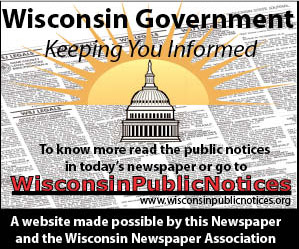By LARRY BALLWAHN | Wilton
Harry Truman had become FDR’s vice president through a convoluted process. FDR had been elected for his fourth term at least in part because he was a third of the triumvirate of Churchill, Stalin and Roosevelt, the leaders who were successfully prosecuting the Second World War. Even though he was vice president, Truman was not privy to any information regarding U.S. war plans. Though FDR’s death was not unexpected, it was shocking when it actually happened. Truman had been vice president for just 82 days by April 12, 1945, when he was unexpectedly called to the president’s office and informed of FDR’s death. He was immediately sworn in as president. The nation was shocked and saddened at the loss of what they had become to consider their compass.
It was shortly after he became president that Truman learned of the Manhattan Project. In 1939, Albert Einstein wrote a letter to President Roosevelt, making the case for the investigation of uranium as a source of a nuclear chain reaction for bombmaking. He believed the Germans were doing so. Partially because of that letter, the study of a possible atomic bomb was given the highest priority. J. Robert Oppenheimer was to coordinate the work done on three separate sites, each focused on different aspects of the project.
“Countdown 1945” does indeed use a countdown method of presenting the information in the book. Each new chapter is titled with the number of days until the bomb is to be used. Since the bomb was only theoretically possible when the project started, much of the book deals with the people involved with the individual components. The components weren’t assembled until an actual test was scheduled. And that wasn’t done until just before the bomb was actually needed.
The Manhattan Project had been sanctioned by FDR with the intention that it could be used to end the war. Millions had been spent. Truman first had to first decide if the project should be continued. As we know, he did.
Germany was defeated in May 1945. Japan, however, refused to be defeated. It appeared that they would fight to the last man to defend their homeland. Many Allied lives would be lost in an invasion. Japanese cities were being firebombed. Japan was slowly losing their outlying islands (at a great cost of Allied lives). Still, they refused to surrender.
The first actual test of the bomb was in the New Mexico desert on July 16, 1945. Truman received the news while at the Potsdam Conference with Churchill and Stalin. He informed the two leaders of the terrible destructive force the U.S. now had. Stalin had little reaction. Churchill was relieved. Other than that, little was to come of the conference.
The estimated loss of American life, mostly young men, was 25,000. In the end, that was the deciding factor. Millions of Japanese civilian lives were lost in the bombing, and the new era of atomic power was born. There is still debate whether inventing the atomic bomb, or especially using it, was the right thing to do. Many scientists regretted their participation, but Truman always believed there was no other choice. The book closes with an epilogue that summarizes the thoughts of many of those involved.
Addendum on another subject: To understand the concept of White Privilege, you have to accept that “White” is a race as much as “Black” is a race. That is one of the points made in “White Fragility” by Robin DiAngelo, the Ontario Book Club selection for August.


